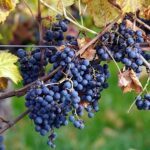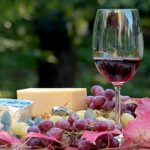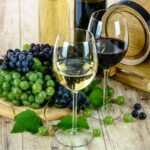
The Mosel Valley isn’t just Germany’s most scenic wine region – it’s one of the most breathtaking in all of Europe. With its steep slate vineyards, riverside villages frozen in time, and world-renowned Rieslings, the Mosel is a destination that delights both the senses and the soul. If you’re a lover of white wine, timeless landscapes, and slow travel, this winding river valley is calling your name.
In this comprehensive guide, we’ll walk you through everything you need to know about exploring the Mosel – including where to go, what to drink, and how to soak up every sip of its unique charm. It’s part of our full series on German wine regions, designed for travelers who want more than just a tasting – they want a connection.
Why the Mosel Is So Special
The Mosel River snakes through western Germany, beginning in France and winding its way to meet the Rhine near Koblenz. It carves out a narrow, dramatic valley lined with some of the world’s steepest vineyards. The unique slate soils, cool climate, and high sun exposure make it perfect for producing elegant, high-acid white wines with extraordinary longevity.
Unlike the Rhine’s broader, castle-rich riverbanks, the Mosel feels more intimate – quieter, greener, and more contemplative. Everything seems to move a little slower here, and that’s exactly the appeal.
The Star of the Show: Mosel Riesling
If you drink one wine in the Mosel, make it Riesling. These wines are what put the region on the global map. Here’s why Mosel Rieslings are beloved by sommeliers and collectors:
- Precision and acidity: Cool temperatures preserve a vibrant freshness.
- Slate minerality: The gray and blue slate soils impart flinty, smoky notes.
- Low alcohol: Many wines are just 8–10% ABV, making them refreshing and food-friendly.
- Aromatic complexity: Expect aromas of green apple, citrus, stone fruits, and white flowers.
- Age-worthiness: The best Mosel Rieslings can evolve for decades.
You’ll encounter a range from bone-dry (Trocken) to delicately sweet Kabinett, and richly honeyed Spätlese and Auslese.
Top Wine Towns Along the Mosel
- Bernkastel-Kues: The region’s unofficial wine capital. Stroll the medieval town square, visit the Mosel Wine Museum, and climb to the ruins of Burg Landshut. Top wineries include Dr. Loosen and Dr. Pauly-Bergweiler.
- Traben-Trarbach: Once the second wealthiest wine trading town in Europe after Bordeaux, it’s filled with Jugendstil architecture and underground wine cellars. Visit Weingut Richard Böcking or partake in a river cruise.
- Cochem: Iconic for its hilltop Reichsburg Castle and lively wine festivals. Although more touristy, it’s an excellent base with many tasting options.
- Zell: Known for its “Zeller Schwarze Katz” (Black Cat) wine. A good choice for hiking, budget accommodation, and relaxed tastings.
- Trittenheim and Neumagen-Dhron: Smaller villages perfect for quiet wine walks. Look for wines from Grans-Fassian or Weingut von Kesselstatt.
Where to Taste: Mosel’s Best Wineries
- Weingut Joh. Jos. Prüm (Wehlen): A legend in Mosel Riesling, especially for its off-dry and sweet wines.
- Weingut Markus Molitor (Bernkastel): Produces a range from dry to sweet, all precise and powerful.
- Weingut Fritz Haag (Brauneberg): Another historic estate known for expressive single-vineyard Rieslings.
- Weingut Selbach-Oster (Zeltingen): Family-run, organic practices, and a beautiful riverside location.
Understanding German Wine Labels in the Mosel
Label terms can be confusing, but they tell you a lot:
- Trocken = Dry
- Halbtrocken = Off-dry
- Feinherb = Lightly off-dry (unofficial term)
- Kabinett = Light and fresh, low alcohol
- Spätlese = Late harvest, richer
- Auslese = Select harvest, sweet
- GG (Grosses Gewächs) = Grand Cru-level dry wines from top vineyards
Don’t be afraid to ask for help – most wineries have English-speaking staff and welcome curious visitors.
Wine Hiking and Cycling Routes
The Mosel’s geography is a gift to wine lovers who enjoy the outdoors:
- Moselsteig Trail: A 365 km hiking route from Perl to Koblenz, broken into manageable day hikes. It offers dramatic views of vineyards, cliffs, and castles.
- Moselradweg: One of Germany’s best cycling routes. Flat, scenic, and passing directly through vineyards and tasting rooms.
Pairing Mosel Wines with Local Cuisine
Mosel cuisine is designed to go with wine. Try these regional dishes:
- Winzersteak: Grilled pork chop marinated in Riesling
- Forelle Müllerin Art: Trout in butter and lemon, perfect with Kabinett
- Flammkuchen: A thin, crispy flatbread with cream, onions, and bacon
- Apfelstrudel: Try it with a late-harvest Auslese
Wine Festivals and Events
No visit is complete without experiencing a Mosel wine fest. Locals dress in traditional garb, parades fill the streets, and open-air tastings abound.
Top festivals include:
- Bernkastel-Kues Wine Festival (early September)
- Traben-Trarbach Underworld Wine Cellar Festival (winter)
- Cochem Wine Week (August)
- Zeller Schwarze Katz Fest (July)
Where to Stay in the Mosel Valley
- Weingut Stays: Many wineries offer guest rooms or small apartments.
- Historic Gasthäuser: Especially in towns like Bernkastel and Traben-Trarbach.
- Riverside Hotels: For views and easy access to river cruises.
Travel Tips for First-Time Visitors
- Season: Late spring through fall is best. September is ideal.
- Transport: Trains serve major towns. For rural wineries, a car or e-bike is useful.
- Language: Basic German is appreciated, but English is widely understood in tourist areas.
- Wine Shipping: Many estates ship abroad – ask about international delivery.
Mosel vs. Rhine: A Quick Comparison
| Feature | Mosel Valley | Rhine Valley |
|---|---|---|
| Landscape | Narrow, steep, dramatic | Wide, grand, romantic |
| Wine Style | Light, elegant Riesling | Fuller-bodied Riesling |
| Atmosphere | Quiet, quaint, contemplative | Historic, festive, vibrant |
| Best For | Hikers, purists, serenity | First-time visitors, castles |
Explore the Full Series
This article is part of our 5-part guide to Germany’s wine regions. Continue your wine journey:
Germany’s Wine Regions: A Traveler’s Guide to Rhine and Mosel Valleys
Exploring the Rhine Valley: Castles, Riesling, and Romantic Wine Towns
German Wine 101: Grape Varieties, Label Terms, and What to Drink
When to Visit German Wine Country: Seasons, Festivals, and Travel Tips
Wine Tourism in Germany: How to Taste Like a Local and Explore With Style
Wine Festivals in Germany: Learn about the vibrant wine culture of the Rhineland.
Raise Your Glass to the Mosel
The Mosel isn’t just a place to drink wine. It’s a place to experience it – from root to glass, from slope to cellar, from ancient Roman routes to 21st-century tasting rooms. Whether you’re biking beside the river, chatting with a winemaker, or sipping Riesling under a slate roof, you’re part of a living tradition.
So pack your hiking boots, bring an appetite, and let the Mosel’s magic uncork something unforgettable.







